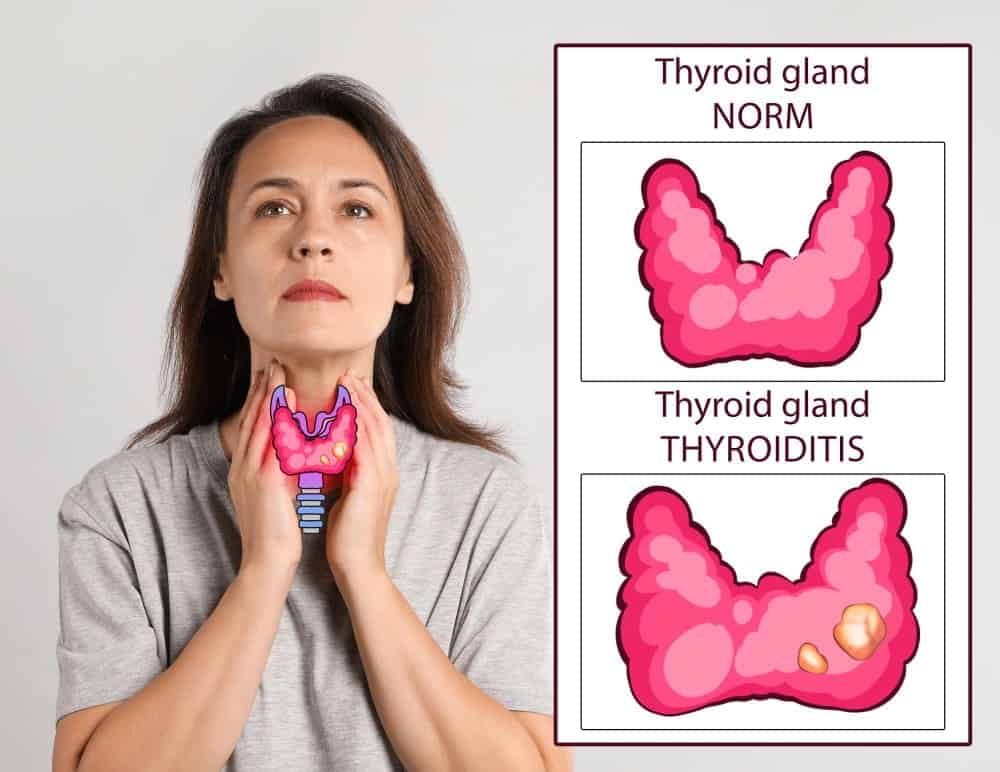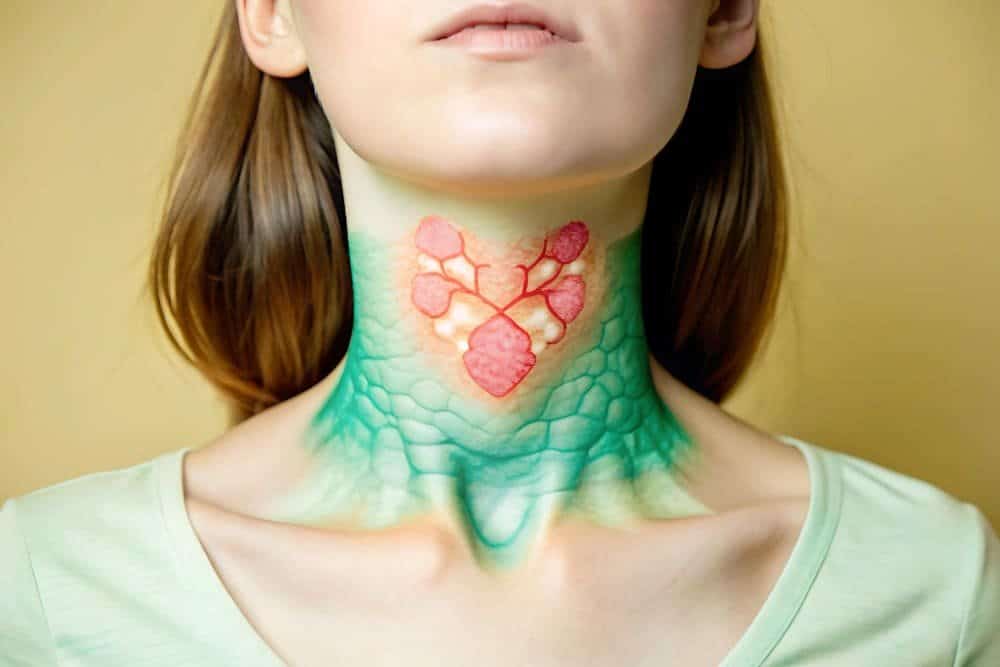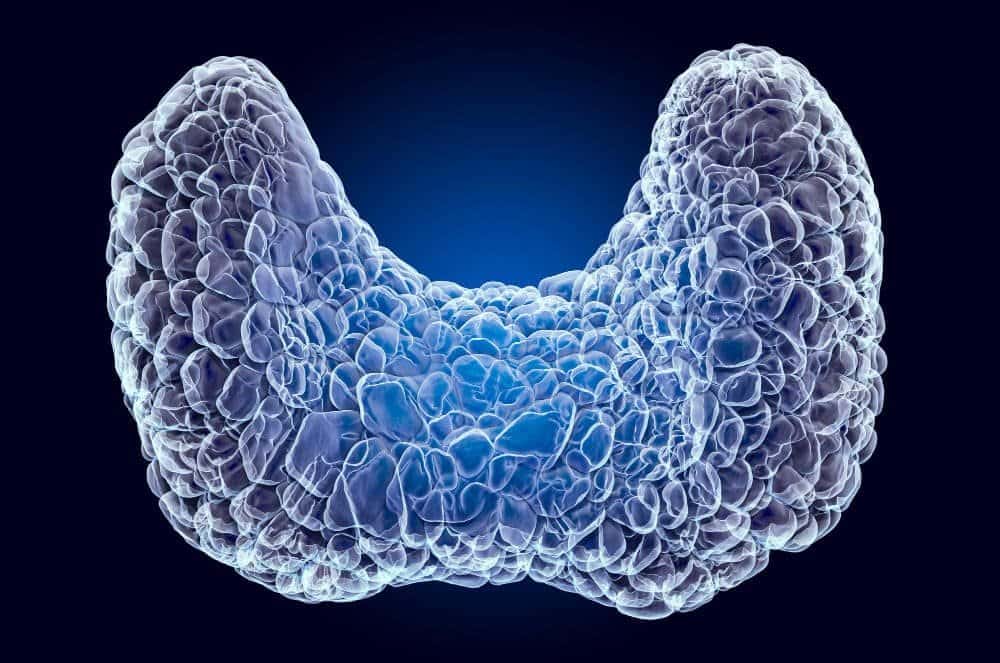A new neck lump can be worrying—especially when the thyroid looks enlarged or feels tender. This guide explains what a female swollen thyroid means, why goitre develops, key symptoms, and how non‑surgical treatments can help quickly. 🌿

What is female swollen thyroid?
A “female swollen thyroid” describes a visible or palpable swelling at the base of the neck due to an enlarged thyroid gland, a condition called goitre. In women, this is a relatively common hormonal condition because autoimmune thyroiditis and nodules occur more frequently, and hormone shifts across life stages can unmask thyroid issues.
A swollen thyroid can involve the entire gland or arise from single or multiple nodules that grow slowly or sometimes more quickly. Some goitres are harmless and only cosmetic, while others signal underactive hypothyroidism or, less often, much thyroid hormone production from an overactive process.
What causes goiter?
Goiter (or goitre) simply means an enlarged thyroid gland. It can be caused by:
- Autoimmune thyroiditis: Hashimoto’s thyroiditis causes chronic inflammation, often leading to an underactive thyroid over time.
- Graves’ disease: Autoimmune stimulation that produces much thyroid hormone with diffuse gland enlargement.
- Thyroid nodules: Single benign lump (solitary nodule) or multiple nodules (multinodular goitre).
- Iodine balance: Deficiency can trigger enlargement; excessive iodine in sensitive individuals can also disturb hormone levels.
- Thyroiditis (inflammation): Subacute or chronic inflammatory processes can cause a tender swollen neck.
- Physiological or hormonal states: Pregnancy and perimenopause may slightly enlarge the gland in susceptible people.
- Medications and exposures: Lithium, amiodarone, neck irradiation, and some supplements can affect thyroid hormone production.
- Rare causes: Congenital abnormalities, infiltrative diseases, or thyroid cancer; note the most common symptom of cancer of the thyroid is usually a firm, growing lump or nodule, not pain.
Symptoms of goiter in female?
Women may notice:
- Tenderness if inflammation (thyroiditis) is active.
- Lumps within the swelling: single or multiple nodules may be felt.
- Visible swelling or a lump at the base of the neck that grows slowly.
- Throat pressure, a “tight collar” feeling, cough, voice change, or trouble swallowing when the gland becomes larger.
- If underactive (hypothyroidism): fatigue, weight gain, cold intolerance, dry skin, hair thinning, constipation, and menstrual irregularities.
- If producing much thyroid hormone (hyperthyroid): palpitations, anxiety, tremor, heat intolerance, weight loss, and sleep disturbance.
Mild goiter pictures

While images help illustrate sizes and neck contours, diagnosis should rely on clinical exam and ultrasound. Mild goiter often appears as a subtle fullness above the sternal notch, more obvious when swallowing. Nodules may distort one side of the neck more than the other. For safety and accuracy, rely on ultrasound descriptions (size in millimeters, solid versus cystic, margins, echogenicity) rather than appearance alone. 📷
Female swollen thyroid: when to see a doctor
- Any new neck swelling or lump that persists beyond 2–4 weeks.
- Rapidly growing lump, hoarseness, difficulty swallowing, or breathing issues.
- Symptoms of underactive or overactive thyroid, or unusual neck pain.
- Family history of thyroid cancer or prior neck irradiation.
- Abnormal blood levels on screening (TSH, free T4, ± free T3).
Diagnosis and tests
- Blood tests: TSH first; if abnormal, add free T4 and possibly free T3; consider thyroid antibodies (TPOAb, TRAb) when autoimmune processes are suspected.
- Ultrasound: Defines nodules, measures the enlarged gland, and evaluates suspicious features.
- Fine-needle aspiration (FNA): For specific nodules meeting criteria by size and ultrasound risk patterns.
- Additional studies: If compressive symptoms, cross‑sectional imaging; if toxic nodules are suspected, a radionuclide uptake scan when appropriate.
Goiter treatment diet
Diet supports thyroid health but is not a cure for most structural goitres:
- Ensure adequate iodine intake from iodized table salt, dairy, seafood, and eggs; avoid excess iodine unless prescribed.
- Balanced selenium, zinc, and iron from whole foods help thyroid enzyme function.
- Cooked cruciferous vegetables are fine in moderation; long-term excessive raw intake may impact iodine utilization in sensitive individuals.
- Avoid unverified “thyroid booster” supplements that can alter hormone levels unpredictably.
- For autoimmune thyroiditis, a nutrient-dense anti‑inflammatory pattern, adequate protein, and stable meal timing support energy and symptom control.
How to shrink a goiter naturally?

“Natural” approaches can help in limited scenarios:
- If caused by mild iodine deficiency, correcting iodine intake can stabilize or slightly reduce a small simple goitre.
- Weight management, stress reduction, and consistent sleep may improve perceived neck pressure and metabolic symptoms.
- However, nodular or larger goitres rarely shrink meaningfully without targeted therapy. Overuse of iodine or herbal products can worsen levels. Natural care should complement, not replace, medical evaluation.
Goiter treatment without surgery: interventional radiology focus
For many women, fast relief without an operation is feasible through image‑guided interventional radiology:
Thyroid artery embolization (TAE)
- What it is: A catheter‑based treatment that reduces blood flow to the enlarged thyroid or dominant nodules, promoting shrinkage.
- How it helps: Decreases size, relieves pressure symptoms, and avoids neck incisions. Most patients return to normal activity quickly.
- Who benefits: Symptomatic benign goitres, multinodular goitre with compressive signs, or patients unfit for or declining surgery.
- Advantages: No general anesthesia, organ‑sparing, repeatable if necessary, and compatible with subsequent treatments if required. ✨
Radiofrequency ablation (RFA)
This procedure is ideal for treating specific thyroid nodules.
- How it Works: A thin needle is inserted directly into the nodule under ultrasound guidance. Radiofrequency energy is applied, generating heat that destroys the nodule’s tissue, causing it to shrink.
- Benefits: It’s a precise treatment that targets only the problematic lumps, leaving the healthy parts of the gland untouched.
Microwave ablation (MWA)
Similar to RFA, MWA uses microwave energy to heat and destroy nodules. It can often treat larger lumps more quickly than RFA.
These interventional radiology treatments offer a safe and effective alternative to surgery, with fewer risks and a much shorter recovery time. They are the future of treating a female swollen thyroid.
Ethanol ablation for cystic nodules
- For predominantly cystic lumps, percutaneous ethanol injection (PEI) can collapse the cavity effectively with minimal discomfort.
Medication options
- Underactive hypothyroidism: Levothyroxine replaces hormones and normalizes blood levels. In specific cases, it may reduce goitre size driven by elevated TSH, though routine suppressive therapy solely to shrink goitre is less favored today.
- Overactive conditions: Antithyroid drugs (e.g., methimazole) lower hormone production; beta‑blockers relieve palpitations and tremor.
- Thyroiditis pain: NSAIDs or, when needed, short courses of steroids under guidance.
- Important: Medication controls hormones; it does not reliably shrink larger structural goitres without adjunct procedures.
When is surgery needed?
- Suspicion for cancer on FNA, significant tracheal compression, retrosternal extension with airway compromise, or failure of minimally invasive options.
- Thyroidectomy offers immediate decompression but requires anesthesia and carries risks (hypocalcemia, nerve injury) and often lifelong hormone replacement.
Final Thoughts
A female swollen thyroid is a common condition that deserves medical attention. While the lump itself is often harmless, it’s a sign that your thyroid gland needs evaluation. Whether the cause is an underactive thyroid, an autoimmune process, or nodules, there are effective treatments available.
For those seeking a solution without the risks and recovery of surgery, modern techniques like thyroid artery embolization and ablation offer incredible hope. Don’t let a goiter affect your quality of life. Arrange an appointment with an expert like Dr. Samir Abdel Ghaffar to explore your options. 💖

 العربية
العربية 

